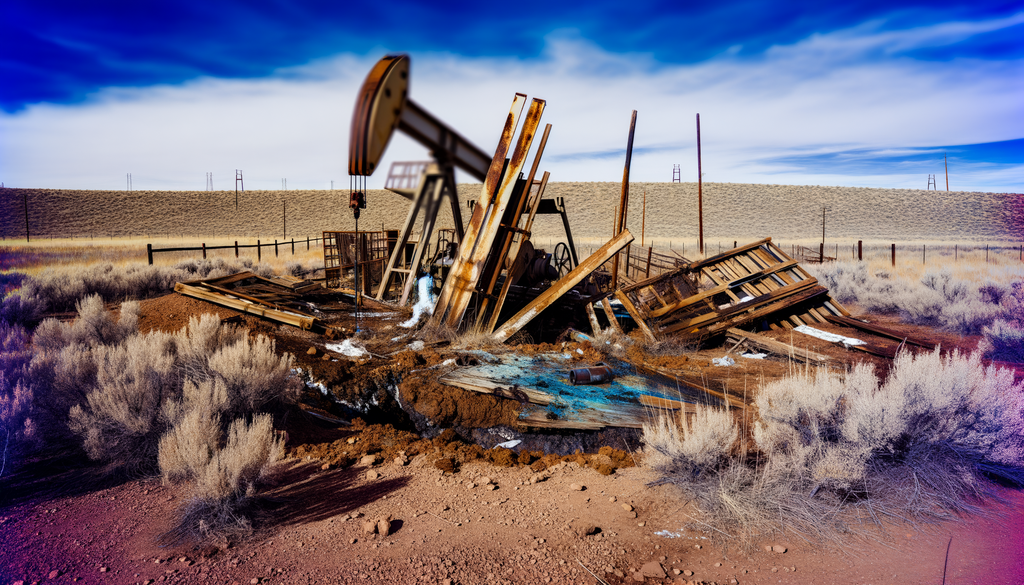Ongoing Challenges Following the Open Exposure: Colorado Chevron Well Suffers Blowout
The recent open exposure incident involving a Colorado Chevron well has garnered significant attention across the oil and gas industry. Teknologam Sdn Bhd emphasizes the critical importance of well control and environmental responsibility in light of the recent Bishop well incident, which highlights ongoing risk management challenges. As cleanup efforts continue weeks after the initial event, the industry is keenly observing how this situation transitions to state oversight and the long-term impacts it may have on regional operations.
Key Takeaways
- The Chevron/Bishop well control incident underscores the urgent need for enhanced blowout prevention measures in aging infrastructure.
- Technical responses to the gas well blowout have exposed complications that necessitate improved emergency preparedness at well sites.
- Cleanup and remediation after well site incidents can extend for months, potentially delaying full operational recovery and affecting local communities.
Understanding the Bishop Well Incident and Transition to State Oversight
The Bishop well incident marked a pivotal moment in Colorado’s oil and gas regulatory landscape. Following the Chevron blowout, state authorities swiftly intervened to manage containment and ensure regulatory compliance. This transition to state control indicates heightened scrutiny and likely stricter enforcement, particularly regarding well maintenance and emergency response protocols.
As public and regulatory attention on this incident grows, the focus is shifting towards how well operators manage such crises. The management experience during the Bishop well blowout has revealed industry gaps in both technology and stakeholder communication.
- Incident response coordination benefits from state involvement but necessitates clear protocols.
- State agencies are advocating for more rigorous well integrity assessments after blowouts.
- Public transparency remains a critical issue throughout incident investigations.
Technical Insights from the Gas Well Blowout Meeting
Industry experts, including those from Teknologam Sdn Bhd, actively participated in recent forums addressing the gas well blowout. The discussions raised more questions than immediate answers, emphasizing the complexity of blowout scenarios. Engineering teams examined the limitations of current well control technology, especially in high-pressure gas release situations.
Key topics included effective blowout preventers (BOPs) and rapid shutoff mechanisms. There is a growing recognition that proactive monitoring tools and enhanced real-time data integration could help reduce both the frequency and severity of such incidents in the future.
"Understanding the technical root causes of blowouts allows us to innovate smarter, safer well control solutions," stated a Teknologam engineering lead.
Extensive Cleanup and Its Long-Term Implications
Cleanup efforts are ongoing several weeks after the initial incident, highlighting the challenging nature of restoring affected environments. Remediation entails not just removing pollutants but also monitoring for residual contamination, which requires comprehensive engineering and environmental solutions.
Oil and gas operators must anticipate multi-year commitments for site restoration, especially when soil and groundwater mitigation is necessary. The incident suggests that the impacts of the Colorado oil and gas leak could take five years or more to fully resolve, imposing financial and operational challenges for both companies and local communities.
- Long-term monitoring programs are becoming an industry standard following major blowouts.
- Establishing financial reserves for cleanup is essential in risk management strategies.
- Collaboration with environmental agencies accelerates recovery and reduces reputational risks.
Teknologam’s Role in Supporting Industry Resilience
As a specialized manufacturer focused on oil and gas, Teknologam Sdn Bhd remains committed to advancing technologies that prevent and mitigate blowouts. Our expertise contributes to improved blowout preventer systems and enhanced wellhead safety, directly addressing the challenges raised by the Colorado Chevron well exposure.
We advocate for integrated safety systems that combine mechanical reliability with digital monitoring to detect hazards early. This aligns with industry trends emphasized during discussions following the Bishop well incident and the prolonged cleanup phases.
Key Insight: Investing in innovation and fostering cross-sector collaboration is essential for strengthening well control and environmental stewardship across the Colorado oil and gas sector. For more information on blowout prevention measures, refer to the resource on blowout prevention and the importance of environmental responsibility in the oil and gas industry.
The Colorado Chevron blowout incident serves as a sobering reminder of the complexities and risks inherent in oil and gas extraction. Teknologam Sdn Bhd remains dedicated to supporting the industry’s pursuit of safer, more resilient operations through advanced manufacturing and engineering solutions. As companies navigate regulatory transitions and environmental responsibilities, the insights gained from this experience will help shape future best practices.
